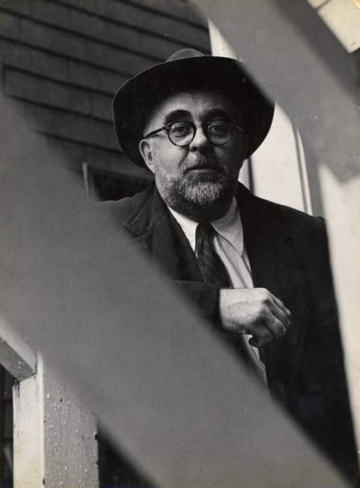The Black Mountain Review
Robert Creeley
Palma de Mallorca, Spain, and Black Mountain, North Carolina
Nos. 1–7 (Spring 1954–Autumn 1957).
The Black Mountain Review, vol. 1, no. 3 (Fall 1954). Cover by Katsué Kitasono.

From 1933 to 1956, Black Mountain College flourished as a unique experimental college and community in a remote North Carolina valley. A local resident remembered the college people as “Godless eccentrics who lived in open dormitories and ran around in shorts and blue jeans,” but poet Robert Creeley recalls the openness and self-determination of those at the school, where there was often a one-to-one ratio of students to teachers. Charles Olson, Josef Albers, Eric Bentley, Buckminster Fuller, John Cage, Merce Cunningham, Franz Kline, Willem de Kooning, Robert Rauschenberg, Robert Duncan, Fielding Dawson, and Francine du Plessix Gray were only some of those.

The Black Mountain Review 6 (Spring 1956). Cover by Dan Rice.
The Black Mountain Review, printed in Palma de Mallorca where Creeley was producing his Divers Press books, developed from the friendship in daily correspondence between Creeley and Black Mountain Rector Charles Olson, who thought a quality literary journal might help increase enrollment. Editorially, Creeley followed advice given him earlier by Ezra Pound: “He suggested I get at least four others, on whom I could depend unequivocally for material, and to make their work the mainstay of the magazine’s form. But then, he said, let the rest of it, roughly half, be as various and hogwild as possible….” Olson’s poem “On First Looking Out of La Cosa’s Eyes” led off the first issue, which also included Olson’s long essay on Robert Duncan, entitled “Against Wisdom as Such,” and poems by Paul Blackburn, who, along with Louis Zukofsky, Denise Levertov, and Robert Duncan, became the core of the magazine. Distribution was difficult, and effected mainly by Jonathan Williams, who hauled the Review around with his Jargon publications, or by Blackburn, who pushed it on vendors in New York. A dramatic feature of all seven issues of The Black Mountain Review was the inclusion of reproductions of visual work.
Each issue included at least one portfolio (8 pages out of 64 for each of the first four issues, for instance). The second issue included “Mayan Heads” by Charles Olson, which introduced photographs of exquisite Mayan pottery (“because they refresh us”). Other issues reproduced work by Franz Kline and Jess Collins, as well as photographs by Aaron Siskind and Harry Callahan. The standard cover for the first four issues was designed by Katsué Kitasono, with Black Mountaineers John Altoon, Dan Rice, and Edward Corbett being responsible for the final three issues (these latter in a smaller and thicker format of over 200 pages each). The seventh and prophetic last issue included work by Allen Ginsberg (“America”), Jack Kerouac, Michael McClure, Philip Whalen, and Gary Snyder, and a chapter from “William Lee’s” Naked Lunch.
“It is difficult…to appreciate the excitement (in certain very limited circles, of course) produced by the appearance of the Review. Today ‘The Black Mountain Poets’ have far less trouble getting their work published: and their counterparts in unfashion among more recent generations of poets have such a variety of mimeographed (sometimes even glossy) outlets, that it’s hard to recall the lack of reputation and lack of publishing opportunities characteristic of the literary scene during those damp, encased, mid-fifties McCarthyite years. Yes, there had been Origin—and after The Black Mountain Review folded in 1957, there was again to be an outlet for innovation: Gil Sorrentino’s Neon, LeRoi Jones’s Yugen, Ron Padgett’s White Dove Review. But not until the early sixties—coincidentally with the breaking open of so many areas of American life—was there to be a variety, happily almost a tumult, of corresponding energies and outlets.”
—Martin Duberman, Black Mountain: An Exploration in Community (New York: Dutton, 1972)

Charles Olson, San Francisco, ca. 1956. Photograph by Harry Redl.
